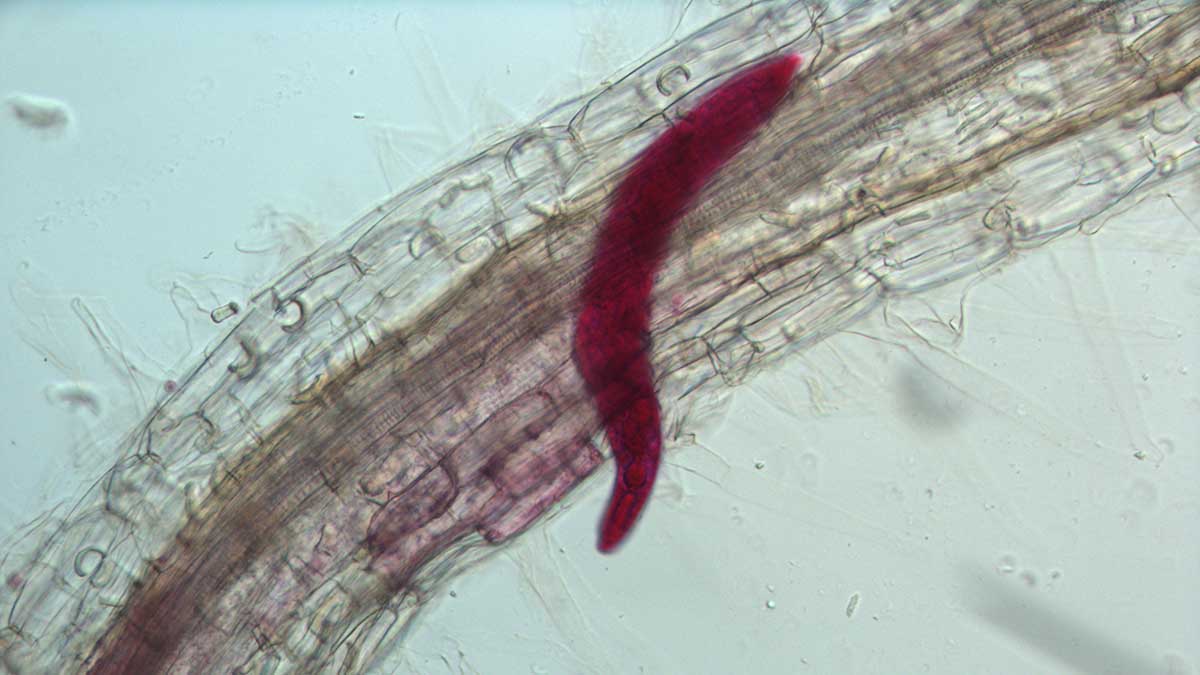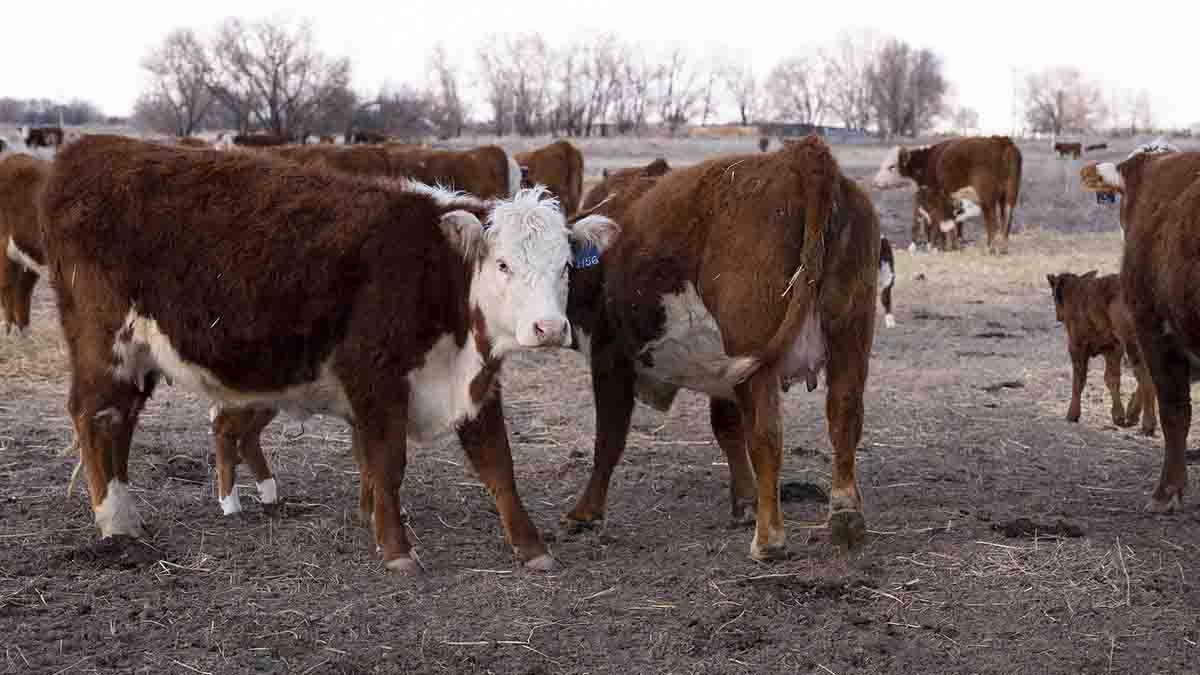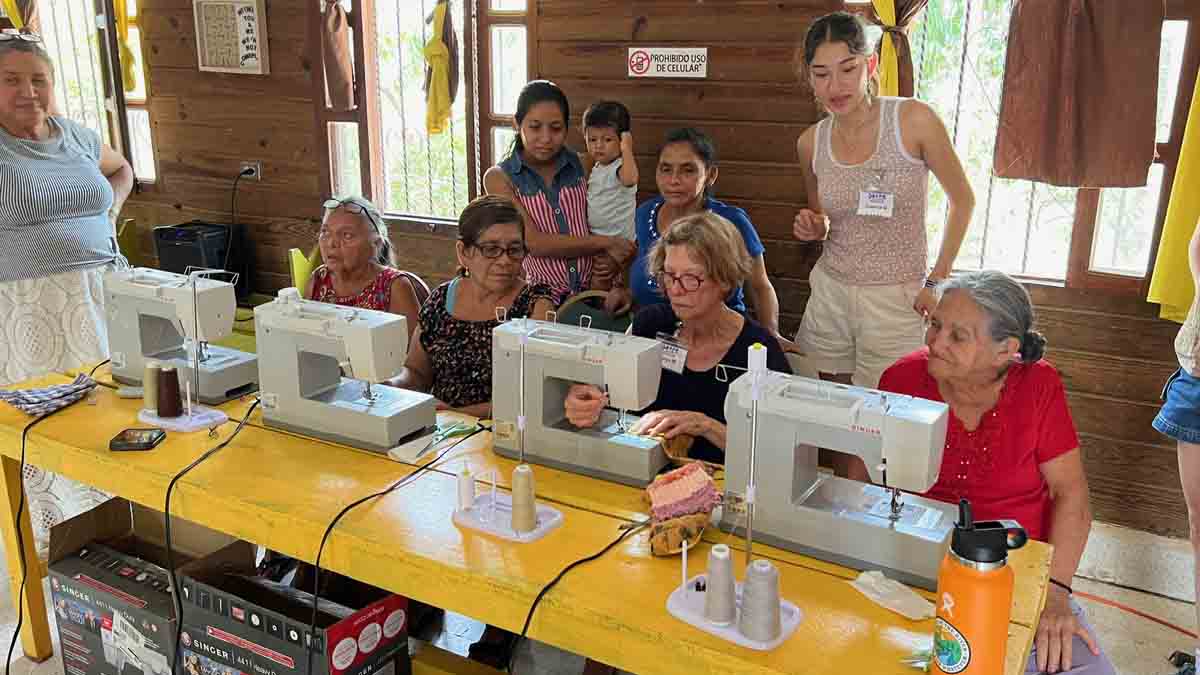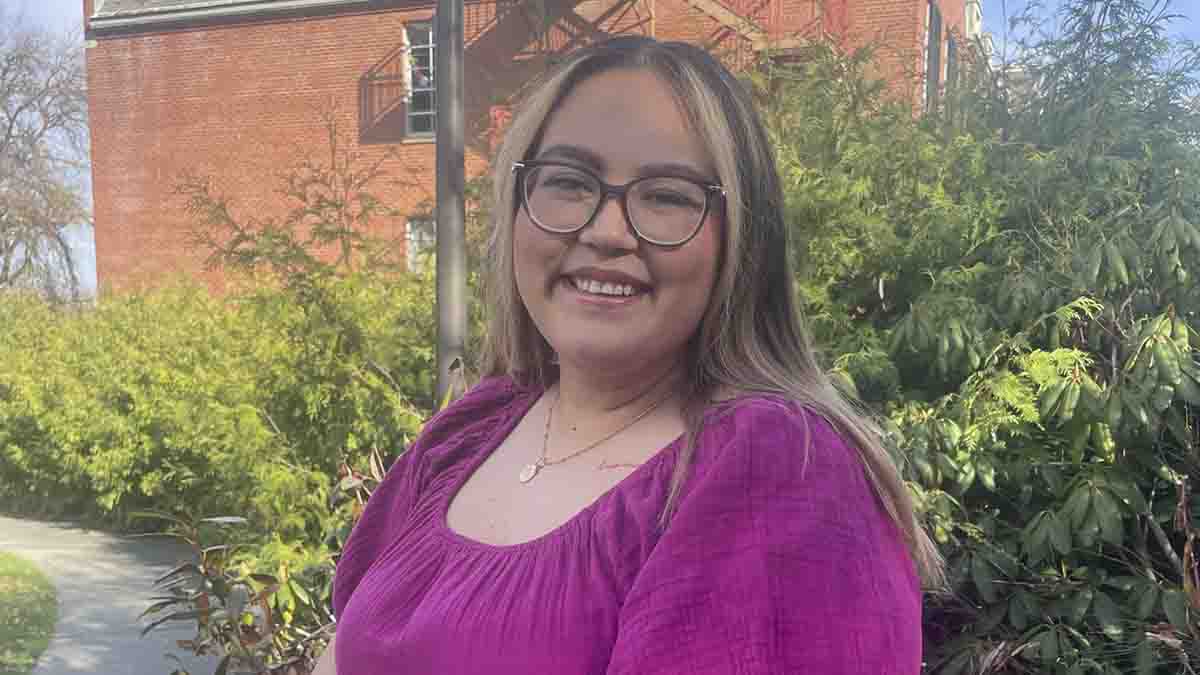Catching Up with CALS — Oct. 16, 2024
Dean's Message — Lucky Number 13
Thirteen has become a lucky number for University of Idaho’s College of Agricultural and Life Sciences (CALS). Students investigating prospective colleges who visit the CALS website will find the number 13 at the center of the homepage, representing our 2025 national ranking among colleges of agricultural sciences, according to niche.com. Niche.com is a website that helps students and families choose the best schools, neighborhoods and workplaces in the U.S. In the recently released rankings, CALS is listed just below Iowa State University and just above Washington State University. It would be an understatement to say our small college is punching above its weight class. We’ve joined the company of America’s flagship agricultural programs — on the same short list as much larger, celebrated institutions including Cornell University, Texas A&M University and University of California-Davis, where I spent most of my career. We’ve become a national player during the nine years since I became CALS dean, and the rankings show we’re now the Pacific Northwest’s top agricultural program. While such rankings are subjective, it’s thrilling simply to be part of the discussion about America’s elite agricultural colleges, and this incredible vote of confidence will be a powerful motivator of student applications. The ranking is also a tool we can use to convey the quality of our research and educational programs to stakeholders and donors.
Niche.com rankings are based largely on statistics and student surveys regarding student experience, academics, value, professors, diversity, local area, campus quality, safety and student life. Rankings also factor the percentage of students majoring in agricultural sciences, agricultural sciences program demand, agricultural sciences research expenditures per student, the percentage of total U.S. agricultural sciences graduates coming from the college and total expenditures dedicated to research in agricultural sciences. Along with the rankings, Niche.com linked reviews from 1,888 students across all U of I colleges, including from CALS. Clearly, our students feel we’re providing an excellent education at a good value and preparing them well to accomplish their career goals. One freshman pursuing a bachelor’s degree in food science gave CALS five stars, writing, “I dream of working with large food science corporations and hopefully owning my own research and development organization.” Another freshman who gave a five-star review wrote, “I am part of the College of Agricultural and Life Sciences at the university. The college is all about supporting the students in the college and has programs to help students succeed. There are also multiple clubs and groups for people to build communications in.”
As impressive as our college’s ascent has been — our most recent ranking has risen from 29 on niche.com’s 2019 list — CALS has yet to reach its full potential. We have several world-class facilities and programs that either opened recently or are still under development. Paul Lewin, who is an associate professor and UI Extension specialist and director of the Rural Studies and Digital Economy programs, received funding from the U.S. Department of Agriculture’s National Institute of Food and Agriculture (USDA-NIFA) in early September to make U of I the new home of the Western Rural Development Center (WRDC). The center, the first national center at the U of I, is tasked primarily with organizing research-based studies and educational outreach programs to address problems facing rural communities. In March, Shelley McGuire, a professor of nutrition and director of the Margaret Ritchie School of Family and Consumer Sciences, received a five-year, $11 million award through the National Institute of General Medical Sciences, which is a component of the U.S. National Institutes of Health, to establish a Center of Biomedical Research Excellence (COBRE) program at U of I focused on nutrition and women’s health. We’re still enrolling farmers and ranchers to participate in the Innovative Agriculture and Marketing Partnership (IAMP), which is funded with a five-year, $55 million U.S. Department of Agriculture grant to incentivize and study voluntary agronomic practices intended to improve soil health and reduce greenhouse gas emissions.
We’ve broken ground on a new facility to accommodate our growing meat science program, to be called the Meat Science and Innovation Center Honoring Ron Richard. We’re nearing completion of the first construction phase of the Idaho Center for Agriculture, Food and the Environment, which will include the nation’s largest research dairy to be located in Rupert. Michael Strickland and Zachary Kayler, with our Department of Soil and Water Systems, are building a Deep Soil Ecotron research facility with a $19 million National Science Foundation grant to study soil at greater depths than ever before. Researchers from throughout the world are lining up to use this facility, which should increase our understanding regarding improving soil health and strategies to store more carbon in soil. These large-scale projects will expand our research capacity, generate more opportunities for significant research grants, lead to more graduate-level and postdoctoral research positions, better serve our stakeholders and improve our ability to prepare students for the workforce.
With our new national ranking, the rest of the country has received notice of what we’ve long understood — CALS may be a small college, but we have what it takes to change the world.

Michael P. Parrella
Dean
College of Agricultural and Life Sciences
By the Numbers
Erin Brooks, a professor in the Department of Soil and Water Systems, will be representing the College of Agricultural and Life Sciences in a field of 8 faculty speakers participating in University of Idaho’s Power of Possibility (POP) Talks, scheduled for 4-5 p.m. PT Oct. 17 in the Bruce Pitman Center International Ballroom. The talks will also be available to view remotely at U of I Live, and audience members will vote for their favorite talk both in person and remotely. Following the talks, 2 scholarships of $1,000 each will be awarded to undergraduate students attending in person. The speaker who receives the most votes for giving the top 3- to 4-minute presentation will receive a $2,500 award toward his or her research. Brooks will speak about the Innovative Agriculture and Marketing Partnership (IAMP).
Our Stories

Nematology Endowment
The University of Idaho College of Agricultural and Life Sciences (CALS) has raised more than $3.2 million from stakeholders toward an endowment honoring the career of nematologist Saad Hafez and supporting the hiring of another world-class nematologist.
The new Saad Hafez Presidential Endowed Chair in Nematology was established thanks to generous donations from J.R. Simplot Company Foundation, Amalgamated Sugar, Co., McCain Foods USA, the Idaho Potato Commission and the Nyssa-Nampa Sugarbeet Growers Association. It will be the university’s first presidential endowed chair, a category recognizing endowments of at least $3 million.
Annual distributions from the endowment will be used at the discretion of the new faculty member for graduate students and research support. The endowment will help the university attract a true global leader in the field to replace Hafez, who will retire at the end of October.
“This is a significant milestone for our university,” U of I President C. Scott Green said. “Establishing our first presidential endowed chair not only affirms our commitment to academic excellence but also strengthens our ability to attract and retain distinguished faculty members who are leaders in their fields. This endowment will serve as a catalyst for innovative agricultural research, enhanced learning opportunities and new partnerships that will benefit Idaho’s agricultural industry and contribute to the field of nematology. It is a testament to the belief in our mission and the bright future ahead for our institution.”
The ability to identify nematode species and develop economical control practices to address the issues they pose is hugely important for agriculture. While some of the microscopic worms cause considerable harm to crops, others benefit soil health, feed on parasitic insects and may be used as tools to boost management programs. According to a U of I study, every $1 invested in the university’s nematology program has returned $53 to Idaho agriculture.
In addition to Hafez, CALS employs Professor Louise-Marie Dandurand, who directs the university’s pale cyst nematode project; Professor Edwin Lewis, an expert in nematode biology and using nematodes for biological control, and Professor Juliet Marshall, a plant pathologist whose laboratory works with nematodes. The researchers are the core of an evolving center of excellence in nematology at U of I.
“There are few other colleges in the U.S. that can match our focus on nematodes, which are not easily understood and represent an important research frontier as we seek to help farmers improve soil health, boost yields and become more sustainable in their operations,” CALS Dean Michael Parrella said. “We are strengthening our position as leaders in nematology, and the work we do through our center of excellence will have national and international applications for agriculture.”
The new nematology position will be based at the Idaho Center for Plant and Soil Health, which opened last fall at the Parma Research and Extension Center. The state-of-the-art facility includes a dedicated nematology lab, which was funded in part by Amalgamated Sugar and is also named in honor of Hafez.
U of I and its stakeholders in Idaho agriculture enjoy a mutually beneficial relationship, with industry support making it possible for CALS researchers to advance science tackling some of the greatest challenges facing food production.
“The J.R. Simplot Co. is proud to partner with the U of I College of Agricultural and Life Sciences and honor Saad Hafez’s achievements in the field of nematology,” said Craig Richael, director of research and development for Simplot Plant Sciences. “We value our work with Idaho’s land-grant university and an investment in this presidential endowed chair supports the company’s mission to steward our natural resources and grow delicious, more sustainable food."
Nematodes first arose as an issue in Idaho in 1976, when plant-parasitic root-knot nematodes were found to be widespread in soil survey samples. Hafez led U of I in establishing its first nematology laboratory in 1981. To date, the program has reported 32 genera and 117 species of nematodes on 31 unique host plant species from 21 Idaho counties. In 2006, Hafez discovered pale cyst nematode in potato tare dirt samples from the Shelley region of Idaho, marking the first discovery of the destructive pest in the U.S. The discovery enabled the U.S. Department of Agriculture to establish a quarantine and eradication program, addressing the threat and protecting important trade markets for Idaho potatoes.
“Nematodes present real and significant production challenges for Idaho’s growers of potatoes and sugar beets. In addition to being a concern in the growing of these crops, they can also be a pest of concern in the export of Idaho potatoes to markets around the world,” said Lloyd Knight, deputy director of the Idaho State Department of Agriculture. “Ongoing research to assist growers in the management and eradication of harmful nematodes is essential to ensuring the success of Idaho agriculture and our ability to export our famous potatoes around the world.”

Heifer Development Workshops
University of Idaho Extension beef experts have scheduled a series of workshops to help the state’s ranchers capitalize on the nation’s smallest beef herd in more than 60 years.
Heifer Development Workshops are scheduled for Nov. 6 at the Washington County Fairgrounds in Cambridge, Nov. 7 at the Oneida County Event Center in Malad and Nov. 8 at the Nancy M. Cummings Research, Extension and Education Center in Salmon. Workshops will cover how to select better heifers, effective and economical heifer development and strategies for improved reproduction, spanning from 9 a.m. to 3 p.m. The $10 registration fee includes lunch.
Extension specialists involved in the workshops include John B. Hall, covering reproduction; James Sprinkle, covering nutrition; Benton Glaze, covering genetics; and Extension economists Brett Wilder and Jessica Windh. Participating UI Extension educators include Sawyer Fonnesbeck, Oneida County; Cheyanne Myers, Canyon County; Tyler O’Donnell, Washington County; and Shannon Williams, Lemhi County. Dr. Lauren Christensen, a U of I veterinarian and assistant professor of mixed practice production medicine, will also participate.
As of Jan. 1, 2024, the U.S. cattle inventory was 87.2 million head, the smallest size since the U.S. Department of Agriculture (USDA) began tracking it in 1964. The most recent peak inventory occurred in 2019, when the national herd reached 94.7 million head.
“Developing bred heifers is one of the most expensive enterprises on the cow-calf operation and being able to do that effectively and efficiently and make the kind of heifers that are going to stay in the herd for a long time is going to be beneficial to us,” Hall said. “This is a good point in the cattle cycle to talk about how to do things better in heifer development to capture some of the advantage in the next cycle.”
Hall advises ranchers to consider heifer breeding soundness exams to help them select animals likely to become pregnant early each season, enabling them to remain in the herd for many years. Furthermore, genomic data and expected progeny differences (EPDs), which offer a prediction of an animal’s genetic ability to pass on traits, will help ranchers make optimal breeding decisions.
Despite the tight beef supply, Wilder believes it may still be another year before herd rebuilding begins, due to several factors.
Many producers must pay off debt and can’t afford to wait more than two years until heifers reach breeding age to recoup their investments, leading them to sell heifers for slaughter. Prices paid by packing facilities are attractive, as smaller plants that opened in recent years still require a steady supply of livestock to keep their facilities operating and their workers employed amid the shortage. Ranchers have an opportunity to sell bred heifers at a premium to other producers seeking to rebuild their herd. Ranchers represent an aging population, and some operators are leaving the industry with nobody in line to succeed them. Drought and wildfires throughout parts of the West and southwest have claimed rangeland, reducing grazing opportunities. Furthermore, consumer demand for beef remains historically strong.
“It would not be a shock to me to see the national beef inventory go down another 3-4%,” Wilder said.
Beef markets are volatile, and Wilder urges ranchers to protect themselves against sudden drops in calf prices by taking advantage of a new line item in USDA’s Livestock Risk Protection Insurance Program allowing them to lock in current prices for their unborn calves.
“If you are a producer of commodities, you have to focus on keeping costs in check, inputs in check and manage the price you receive, whether that’s through risk management tools or contracts,” Wilder said. “We are reaching a space in time where you cannot afford to not know your numbers and not know what your marketing opportunities are. If you are somebody who would like to brush up on those tools, attending these workshops would be a really great opportunity.”

A Life-changing Trip
Visiting a landfill in Guatemala where families were living in tarp and scrap-metal shanties was simultaneously one of the most heart-warming and gut-wrenching moments of Jo Osornio’s life.
Osornio and Kenzie Eppey, undergraduates studying apparel, textiles and design (ATD) in University of Idaho’s Margaret Ritchie School of Family and Consumer Sciences, accompanied instructor Chelsey Byrd Lewallen and Professor Sonya Meyer on a 10-day humanitarian trip to Guatemala last May.
The group witnessed unimaginable poverty, but they also reveled in the opportunity to distribute necessities and teach sewing, weaving, felting and embroidery workshops that have helped local artisans tap new income streams. The trip, organized by Indiana-based nonprofit Hearts in Motion, also included medical professionals who performed surgeries to fix cleft palates and 40 Washington State University biological sciences and Spanish students who tested locals for iron deficiency and type II diabetes. U of I hopes to return to Guatemala next May with a larger group of FCS students and faculty representing several additional programs. Early during the trip, the U of I group served lunch and distributed essential items to families living in a landfill, also handing out stuffed animals to shoeless children who didn’t give a second thought to walking barefoot over broken glass. It struck Osornio, of Caldwell, that people who had so little could be so full of joy and gratitude.
Faces and Places
Vivian Kuhner, an apparel, textiles and design student in the Margaret Ritchie School of Family and Consumer Sciences, received funding through the university’s Office of Undergraduate Research in support of her project, “Improving Self-concept for People with Disabilities Through Better Clothing Choices.” She will present her research at the Undergraduate Research Symposium in April 2025.
Neida Romo, an apparel, textiles and design student in the Margaret Ritchie School of Family and Consumer Sciences, received funding through a scholarship from the CALS Undergraduate Research Scholarship, which is funded by a U.S. Department of Agriculture grant. Her project involves working with fiber optics as a decorative and color-changing element for potential use in quinceañera dresses. She will present her research at the Undergraduate Research Symposium in April 2025.
The VandalStore is selling CALS branded items for a limited time. Purchases must be made by Nov. 1 and can be delivered or picked up at the Moscow store.
The CALS dietetics graduate program has been ranked as one of the top 35 registered dietitian programs in the nation. Criteria for ranking in the top 35 includes accreditation, experiential practice and flexibility of course delivery.



Events
- Oct. 16 — Dementia Friends Information Session, Blackfoot
- Oct. 16 — Third Wed. monthly to April 16 — Heritage Orchard Conference, Online
- Oct. 17 — Power of Possibility (POP) Talks, Moscow
- Oct. 17 — Influencer Nutrition and What it Means for You, Moscow
- Oct. 22 — Tues. to Nov. 19 — Get the Dish: A Virtual Cooking Series, Online
- Oct. 22 — Idaho Home Garden Tips Class, Online
- Oct. 24 — Girl Dinner: Unpacking What it Means for You, Moscow
- Oct. 24, Nov. 21 — Kids in the Kitchen Virtual Cooking Club, Online
- Oct. 25 — Babysitters Training, Caldwell
- Oct. 30 — Eating Well on Any Budget, Moscow
- Oct. 31, Nov. 7 & 14, Dec. 5 & 12 — Forestry Shortcourse, Sandpoint
- Nov. 4 — One Pot Budget Wonder: Make and Take an Easy Fall Meal, Moscow
- Nov. 6-8 — Heifer Development Workshop flyer (pdf) at locations: Cambridge 6th, Malad 7th; Salmon 8th
- Nov. 7 — Holiday Food Hacks, Online
- Nov. 8 — Selkirk-Pend Oreille Food Summit, Sandpoint Organic Agriculture Center












